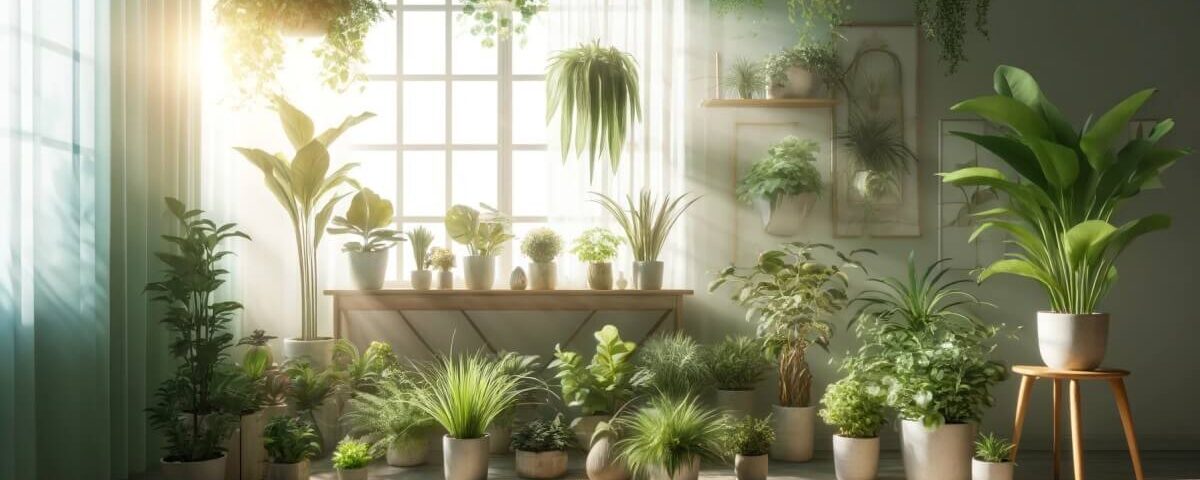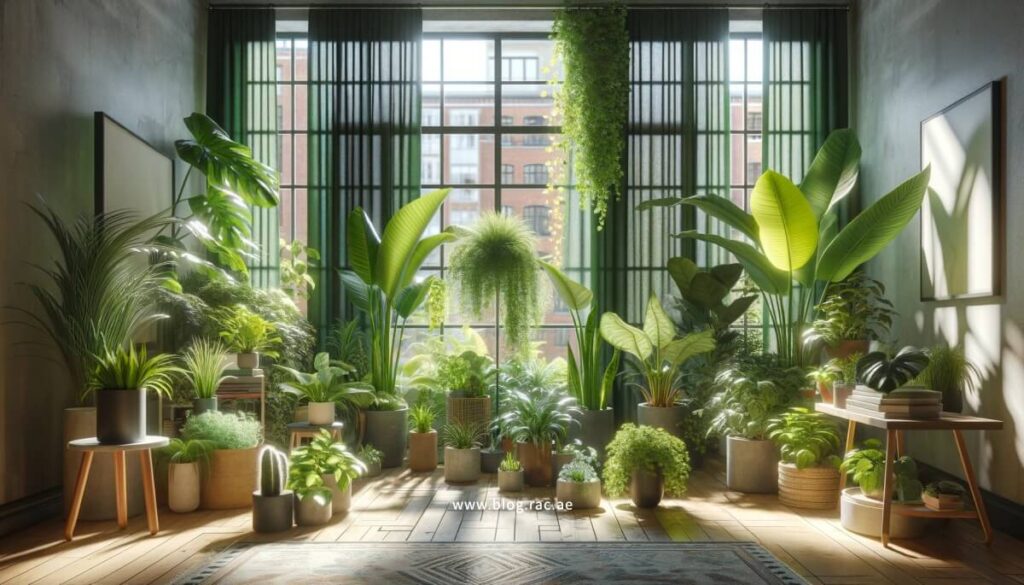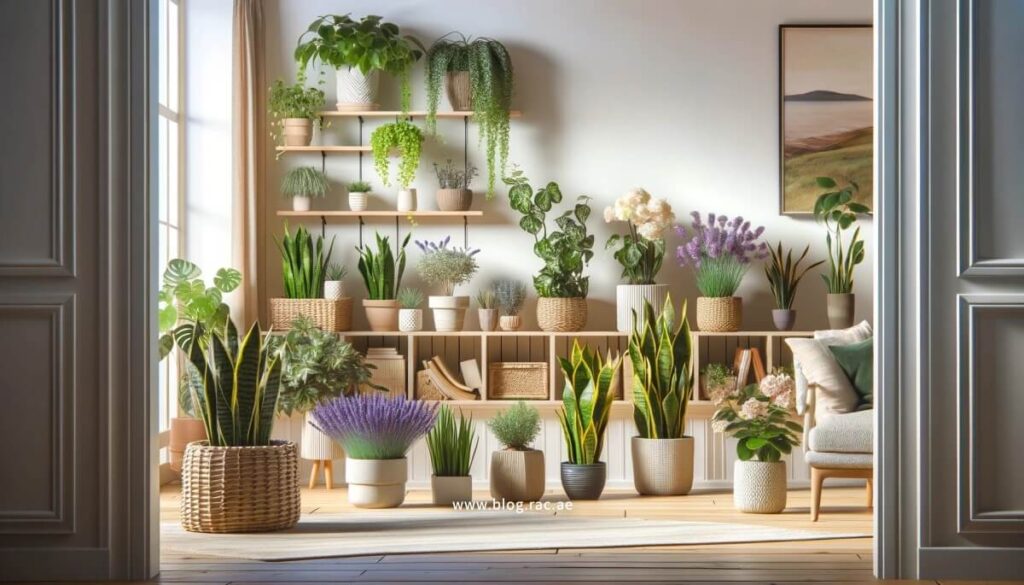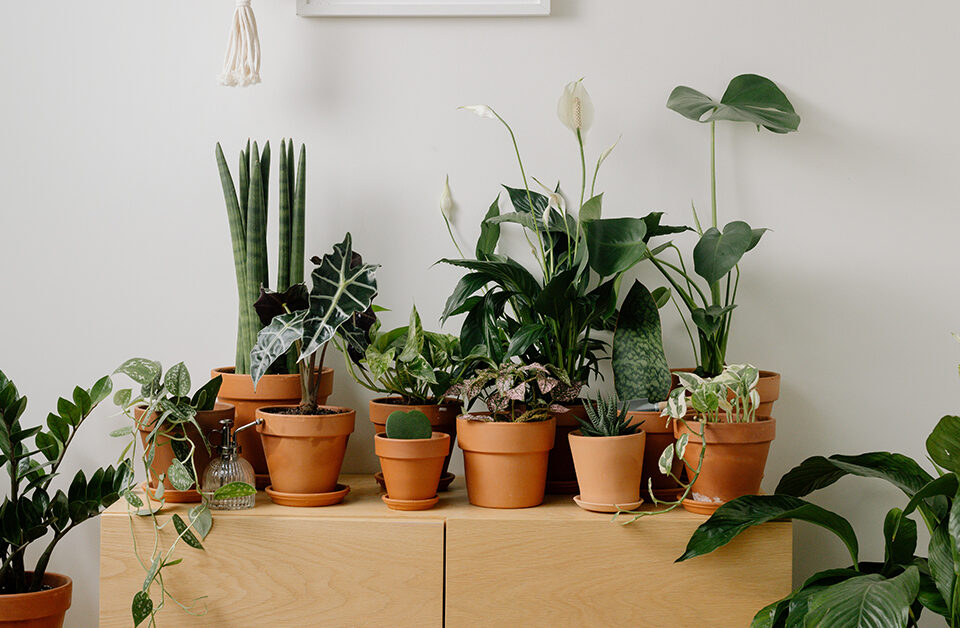
Is Your Office Making You Sick? Signs It’s Time for a Redesign
April 9, 2024
Sustainable Swaps: Eco-Friendly Alternatives for Your Renovation
April 16, 2024Can Plants Really Improve Your Mood? Science Says Yes!

The quest for mental well-being in our bustling world has led many to seek solace in various wellness practices. Interestingly, a burgeoning body of scientific evidence points to a rather accessible source of joy and tranquility: plants. While the notion that plants can influence our emotional state positively isn’t novel, recent research provides compelling proof that interactions with plants can markedly enhance mental health. This article explores the intriguing ways through which plants contribute to mood enhancement, underpinned by the latest scientific insights.
Table of Contents
The Science Behind Plants and Mood Improvement
Beyond their aesthetic value, plants play a pivotal role in fostering a healthier living environment through photosynthesis. This process not only purifies the air by converting carbon dioxide into oxygen but also helps create a more serene atmosphere conducive to mental well-being. Scientific investigations reveal that spaces adorned with plants exhibit lower carbon dioxide levels, increased humidity, and diminished pollutants, which collectively can improve cognitive function and emotional states.
Additionally, the psychological benefits of being around plants have been documented, showing that mere exposure to greenery can mitigate stress, anxiety, and negative emotions. Theories suggest that plants can uplift mood through visual stimulation the serene green hue and the intricate designs of plants can captively engage our focus in a soothing manner.

How Plants Affect Our Mental Health
The link between plant interaction and mental health enhancement is supported by various research findings. Engaging with plants, whether by gardening or spending time in green spaces, has been associated with lower stress, anxiety, and depression levels. For example, one study highlighted that individuals who spent time in gardens experienced a significant reduction in stress compared to their counterparts in non-green urban environments.
Real-world cases further underscore the mental health benefits associated with plant life. Offices that integrate plant elements report enhanced employee satisfaction, reduced stress, and increased productivity. Hospitals that incorporate gardens or green elements also observe accelerated recovery rates and a decreased dependency on pain medications among patients.
The biophilia hypothesis, suggesting a natural human inclination towards connecting with nature and living organisms, provides an explanation for these effects. This innate predisposition towards nature, rooted in our evolutionary past, is believed to be instrumental in fostering mental well-being when we interact with plants and green spaces.
The Role of Gardening in Improving Mood
Gardening transcends being a mere pastime; it is a therapeutic activity for many. Engaging in the act of planting and nurturing plants offers a mindfulness exercise, serving as a respite from daily mental clutter. Research demonstrates the therapeutic benefits of gardening across various demographics, including the elderly, individuals facing mental health challenges, and prison inmates, showcasing improved mood and reduced stress levels.
The fulfillment and purpose derived from tending to plants also contribute to elevated self-esteem and overall well-being. Whether it’s the germination of seeds or the flowering of plants, gardening provides tangible rewards that boost mood and satisfaction.

Types of Plants Known for Boosting Mood
Certain plants are celebrated for their specific properties that aid in mood enhancement. Lavender is praised for its calming aroma, which can aid in stress reduction and promote better sleep. Snake plants are renowned for their air-purifying qualities and minimal care requirements, making them ideal for indoor settings and potentially easing anxiety while improving air quality.
Spider plants are recognized for their efficiency in removing toxins from the air, contributing to a more healthful and enjoyable living space. The bright hues and aromatic scents of flowering plants like roses, jasmine, and gardenia can also lift spirits through their visual and olfactory appeal.
When choosing mood-enhancing plants, consider their care needs, your living environment, and personal preferences. It’s vital to select species that align with your lifestyle and space to ensure a rewarding plant-care experience.
Practical Tips for Incorporating Plants into Your Life
Introducing plants into your daily life can be a straightforward yet profound step towards better mental health. Here are actionable tips to begin:
- Start Small: Opt for easy-care plants like succulents, snake plants, or pothos if you’re new to plant care. These plants are resilient and require minimal attention.
- Assess Your Environment: Choose plants that will thrive in your home’s specific conditions, considering light, space, and climate.
- Embrace Gardening: If you have access to an outdoor area, consider cultivating a small garden. This activity can provide physical and emotional benefits through direct interaction with nature.
- Decorative Integration: Incorporate plants into your home and workspace decor. A small plant on your desk can help lower stress and improve concentration.
- Community Engagement: Connect with a community of plant enthusiasts through gardening clubs or plant exchange groups for social support and shared joy in plant care.
Challenges and Considerations
While the addition of plants to one’s life is largely beneficial, it’s important to be mindful of potential obstacles such as allergies to specific plants. Selecting hypoallergenic varieties can mitigate this concern.
The commitment required for plant care might seem daunting to novices. Choosing low-maintenance varieties and gradually acquainting oneself with plant care can alleviate this apprehension. Space constraints, particularly in smaller living quarters, can also present challenges. Employing creative solutions like vertical gardens, hanging pots, or utilizing windowsills can help overcome these limitations.
Key Takeaways: The Science of Plants and Mood Improvement
Integrating plants into daily life can significantly enhance mental well-being through improved air quality, reduced stress, and increased satisfaction. The biophilia hypothesis underscores our natural inclination to connect with nature, which is supported by scientific research showing that plants can uplift mood and improve mental health. Starting with easy-care plants, considering your environment, and engaging in gardening can provide profound emotional benefits. The presence of plants in offices and hospitals also demonstrates their positive impact on productivity and healing, respectively. By embracing plants, we can create healthier, more serene living and working environments.
Conclusion
The affirmative relationship between plants and mood enhancement is not merely anecdotal but scientifically validated. Plants offer a myriad of benefits, from environmental purification to the therapeutic effects of gardening, culminating in a significant positive impact on our emotional well-being. By integrating plants into our daily lives, we can tap into a simple yet effective means of fostering mental health and embracing a more serene and connected lifestyle. Let the lushness of greenery around you serve as a testament to life’s beauty and the endless potential for growth and renewal within us all.
FAQs
1. Can plants really improve mental well-being?
Yes, scientific research has shown that interactions with plants can enhance mental health by reducing stress, anxiety, and negative emotions. The presence of greenery in living and working spaces has a significant positive impact on mood and overall well-being.
2. How do plants purify the air?
Plants purify the air through photosynthesis, a process where they convert carbon dioxide into oxygen. This helps reduce indoor pollutants and increases humidity, creating a healthier environment that can improve cognitive function and emotional states.
3. What is Sick Building Syndrome and how do plants help?
Sick Building Syndrome refers to health and comfort issues experienced by building occupants that seem to be linked to time spent in a building. Plants help mitigate these issues by improving air quality and creating a more serene atmosphere.
4. How does being around plants affect mental health?
Being around plants can reduce stress, anxiety, and depression levels. The visual stimulation from greenery and the act of engaging with plants, such as gardening, can uplift mood and enhance mental well-being.
5. What is the biophilia hypothesis?
The biophilia hypothesis suggests that humans have an innate tendency to seek connections with nature and living organisms. This natural inclination is believed to enhance mental well-being when we interact with plants and green spaces.
6. What are the benefits of gardening for mental health?
Gardening offers therapeutic benefits by providing a mindfulness exercise, reducing stress, and improving mood. The fulfillment from nurturing plants and seeing them grow boosts self-esteem and overall well-being.
7. Which plants are known for boosting mood?
Lavender is known for its calming aroma, snake plants for their air-purifying qualities, and spider plants for their efficiency in removing toxins. Flowering plants like roses, jasmine, and gardenia also lift spirits with their visual and olfactory appeal.
8. How can I start incorporating plants into my life?
Begin with easy-care plants like succulents or snake plants if you’re new to plant care. Assess your environment for light, space, and climate suitability, and gradually introduce plants into your home and workspace decor.
9. What should I consider when choosing mood-enhancing plants?
Consider the care needs of the plants, your living environment, and personal preferences. Select species that align with your lifestyle and space to ensure a rewarding plant-care experience.
10. How do plants in offices improve employee well-being?
Offices that integrate plants report enhanced employee satisfaction, reduced stress, and increased productivity. The presence of plants creates a more pleasant and healthier work environment.
11. Can plants help in hospitals?
Yes, hospitals that incorporate gardens or green elements observe accelerated recovery rates and decreased dependency on pain medications among patients. Plants contribute to a more healing and comforting atmosphere.
12. What are some practical tips for maintaining indoor plants?
Start with resilient plants that require minimal attention, like pothos or snake plants. Ensure they receive adequate light and water, and gradually expand your collection as you become more confident in plant care.
13. Are there any challenges to incorporating plants into daily life?
Potential challenges include allergies to specific plants, the commitment required for plant care, and space constraints. Choosing hypoallergenic varieties, starting with low-maintenance plants, and employing creative solutions like vertical gardens can help overcome these obstacles.
14. How does visual stimulation from plants affect mood?
The serene green hue and intricate designs of plants engage our focus in a soothing manner, reducing stress and enhancing mood. The visual appeal of plants contributes to a more tranquil and pleasant environment.
15. What is the role of community engagement in plant care?
Connecting with a community of plant enthusiasts through gardening clubs or plant exchange groups provides social support and shared joy in plant care. This engagement fosters a sense of belonging and enhances the overall plant-care experience.


0 Comments
I regard something genuinely special in this site.